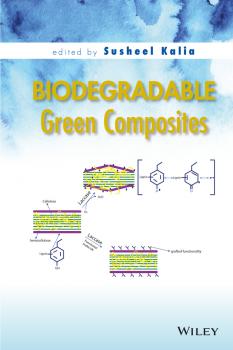ТОП просматриваемых книг сайта:
Susheel Kalia
Список книг автора Susheel KaliaАннотация
This book covers all aspects of the different classes of nanomaterials – from synthesis to application. It investigates in detail the use and feasibility of developing nanocomposites with these nanomaterials as reinforcements. The book encompasses synthesis and properties of cellulose nanofibers, bacterial nanocellulose, carbon nanotubes / nanofibers, graphene, nanodiamonds, nanoclays, inorganic nanomaterials and their nanocomposites for high-end applications such as electronic devices, energy storage, structural and packaging. The book also provides insight into various modification techniques for improving the functionality of nanomaterials apart from their compatibility with the base matrix.
Аннотация
This volume incorporates 13 contributions from renowned experts from the relevant research fields that are related biodegradable and biobased polymers and their environmental and biomedical applications. Specifically, the book highlights: Developments in polyhydroxyalkanoates applications in agriculture, biodegradable packaging material and biomedical field like drug delivery systems, implants, tissue engineering and scaffolds The synthesis and elaboration of cellulose microfibrils from sisal fibres for high performance engineering applications in various sectors such as the automotive and aerospace industries, or for building and construction The different classes and chemical modifications of tannins Electro-activity and applications of Jatropha latex and seed The synthesis, properties and applications of poly(lactic acid) The synthesis, processing and properties of poly(butylene succinate), its copolymers, composites and nanocomposites The different routes for preparation polymers from vegetable oil and the effects of reinforcement and nano-reinforcement on the physical properties of such biobased polymers The different types of modified drug delivery systems together with the concept of the drug delivery matrix for controlled release of drugs and for antitumor drugs The use of nanocellulose as sustainable adsorbents for the removal of water pollutants mainly heavy metal ions, organic molecules, dyes, oil and CO2 The main extraction techniques, structure, properties and different chemical modifications of lignins Proteins and nucleic acids based biopolymers The role of tamarind seed polysaccharide-based multiple-unit systems in sustained drug release
Аннотация
This book comprehensively addresses surface modification of natural fibers to make them more effective, cost-efficient, and environmentally friendly. Topics include the elucidation of important aspects surrounding chemical and green approaches for the surface modification of natural fibers, the use of recycled waste, properties of biodegradable polyesters, methods such as electrospinning, and applications of hybrid composite materials.



